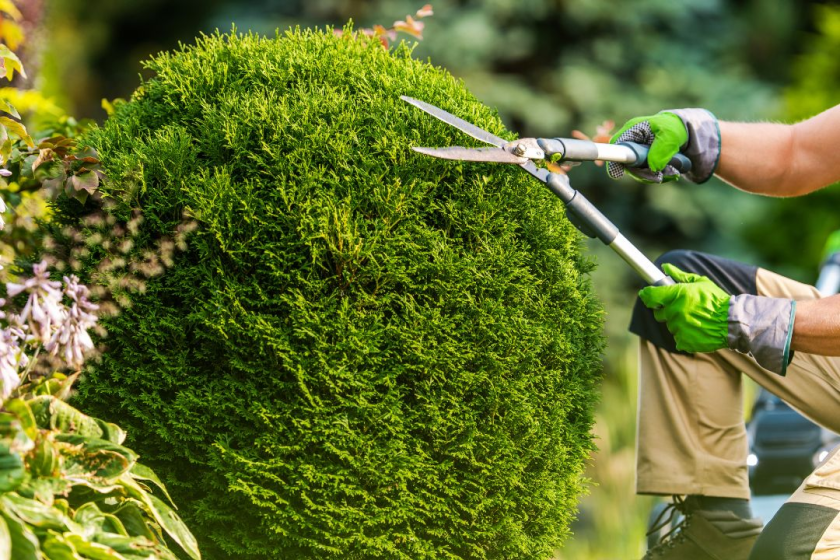Trees are not just static features of the landscape; they are dynamic, living organisms that require care and attention to thrive. One of the fundamental aspects of tree care is trimming, a practice that goes beyond mere aesthetics. Tree trimming is a delicate art and a scientific endeavor that plays a crucial role in maintaining the health, safety, and overall well-being of trees.
The Purpose of Tree Trimming
1. Health and Vigor
Tree trimming is akin to a spa day for your green companions. It involves the removal of dead or diseased branches, allowing the tree to redirect resources to healthier areas. This promotes overall tree health, making them more resistant to diseases and pests.
2. Safety First
Safety is paramount, especially when trees are in close proximity to homes, power lines, or public spaces. Regular tree trimming helps eliminate weak or overhanging branches that could pose a threat during storms or high winds. Proper trimming minimizes the risk of falling branches, ensuring the safety of people and property.
3. Aesthetic Appeal
Beyond the functional aspects, tree trimming is an art form that enhances the beauty of your landscape. Skilled arborists can shape trees to complement their surroundings, creating a visually pleasing and harmonious environment.
The Science Behind Tree Trimming
1. Understanding Tree Biology
Before diving into the act of trimming, it’s crucial to understand the biology of trees. Different species have varying growth patterns and response mechanisms to pruning. For instance, deciduous trees may have different requirements compared to evergreens. Knowing the specific needs of your tree is essential for effective and beneficial trimming.
2. Timing Matters
Just as with any form of care, timing is crucial in tree trimming. The best time to trim trees can depend on the species, but generally, late winter or early spring is recommended. This is when trees are dormant, reducing stress and allowing for optimal healing.
3. Proper Techniques
The way a tree is trimmed can impact its growth and health. The three main types of tree trimming cuts are:
- Thinning: Involves selectively removing branches to increase light penetration and air circulation. This is beneficial for the tree’s overall health.
- Raising: Focuses on removing lower branches to provide clearance for structures, vehicles, or pedestrians.
- Reduction: Involves cutting back the size of a tree, which is useful for maintaining its shape and preventing branches from interfering with structures.
Benefits of Tree Trimming
1. Disease Prevention
Removing dead or diseased branches through trimming is like administering preventive medicine to your tree. It prevents the spread of diseases and keeps the tree in robust health.
2. Improved Structure and Form
Proper trimming enhances the structural integrity of a tree, promoting a strong and well-balanced form. This is particularly important for young trees as it sets the foundation for healthy growth.
3. Increased Sunlight and Airflow
Thinning the canopy through trimming allows more sunlight to reach the lower branches and the ground below. This not only benefits the tree but also promotes the growth of grass and other plants beneath.
4. Enhanced Safety
By removing weak or overhanging branches, tree trimming significantly reduces the risk of accidents and property damage during storms or adverse weather conditions.
DIY Tree Trimming vs. Professional Arborist Services
While some homeowners may opt for a DIY approach to tree trimming, it’s essential to recognize the limits of one’s expertise. Professional arborists bring a wealth of knowledge, experience, and specialized equipment to the table. They can accurately assess the health of a tree, identify potential issues, and execute precise trimming techniques. Hiring a certified arborist ensures the job is done safely and effectively, promoting the long-term well-being of your trees.
Essential Tips for Tree Trimming Success
1. Start Early and Regularly
Regular tree trimming from a young age establishes good growth habits and prevents the need for drastic pruning later on. It also ensures that potential issues are addressed promptly.
2. Be Mindful of Branch Collars
When making cuts, it’s crucial to be aware of the branch collar—the swollen area at the base of a branch. Cutting just outside the collar allows for proper healing and minimizes the risk of disease.
3. Avoid Over-Pruning
Over-pruning, also known as “tree topping,” can be detrimental to a tree’s health. It weakens the structure, exposes the tree to diseases, and leads to rapid regrowth that is often weaker and more prone to breakage.
4. Use the Right Tools
Having the proper tools, such as sharp pruning shears and saws, is essential for clean and efficient cuts. Using dull or inappropriate tools can cause unnecessary damage to the tree.
5. Consider Professional Consultation
If in doubt or dealing with large or mature trees, it’s advisable to consult with a professional arborist. They can provide insights, recommend the best course of action, and ensure the job is done safely.
Conclusion
Tree trimming is both an art and a science, requiring a delicate balance to ensure the health, safety, and beauty of our green companions. Understanding the biology of trees, employing proper techniques, and recognizing the benefits of regular trimming are essential components of responsible tree care. Whether you’re a DIY enthusiast or prefer professional assistance, investing in the well-being of your trees through regular trimming is a commitment to a greener, healthier, and safer environment Tree Maintenance.

